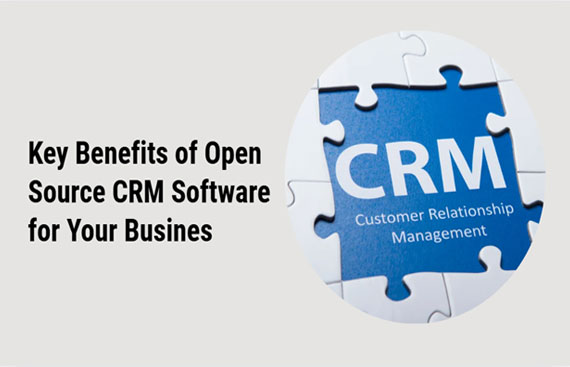Key Benefits of Open Source CRM Software for Your Business

Managing customer relationships in the cutthroat business world of today involves more than just keeping contact lists up to date. Every interaction yields insightful information that can increase sales, enhance customer retention, and fortify brand loyalty. However, many companies struggle with scattered spreadsheets, disconnected apps, and misaligned teams. Without a centralized system, customer data can easily slip through the cracks, resulting in missed opportunities and frustrated clients.
An Open source CRM software offers a solution by combining flexibility, control, and affordability. Unlike proprietary systems, it allows businesses to tailor the platform according to their unique workflows, technical infrastructure, and growth strategies. This article explores the key benefits of adopting open source CRM software and guides businesses toward making an informed choice.
Understanding Open Source CRM Software
Before diving into the advantages, it is important to understand what makes open source CRM different from traditional solutions. Open source CRM software provides access to the underlying source code, allowing businesses to modify features, add custom modules, or integrate with other tools seamlessly.
Why Businesses Choose Open Source CRM Software
Many organizations gravitate toward open source CRM software because it provides both flexibility and cost efficiency. Companies can adapt the platform to match evolving business needs without being confined to fixed functionalities or expensive licenses. This level of control makes it easier to maintain alignment across sales, marketing, and support teams while fostering a consistent customer experience.
Core Advantages of Open Source CRM Software
- Customizability: Tailor dashboards, workflows, and modules to your business processes.
- Integration-Friendly: Seamlessly connect with email platforms, accounting systems, marketing automation tools, and more.
- Cost Efficiency: Reduce licensing fees while retaining access to advanced features.
- Scalability: Adjust user permissions, add modules, or expand data capacity as your company grows.
- Community Support: Benefit from developer communities, plugins, and shared resources for continuous improvements.
How Collaboration Improves Productivity
Open source CRM platforms are designed to break down silos between departments. Marketing, sales, and support teams can all access the same customer information in real time, reducing duplication, miscommunication, and delays. These systems often include built-in tools for internal messaging, shared task management, and collaborative workflow automation, ensuring that everyone stays aligned.
Key Collaboration Features:
- Track interactions in a single platform: View emails, call logs, tickets, and meeting notes in one place to prevent lost context.
- Automate task assignment and reminders: Ensure follow-ups happen on time and responsibilities are clearly allocated.
- Share reports and insights across departments: Marketing campaigns, sales forecasts, and support performance data can be accessed without relying on spreadsheets or email chains.
- Enable remote and distributed team access: Cloud-based access ensures teams working from different locations or remotely can remain synchronized.
Automation and Workflow Efficiency
Manual, repetitive tasks can slow down teams and introduce errors. Open source CRM software addresses this by automating routine processes, allowing teams to focus on higher-value activities such as nurturing leads, solving customer issues, and strategizing growth initiatives.
Practical Examples of Automation
Automation features can be tailored to your business needs, including:
- Automated lead scoring: The system evaluates prospects based on engagement, interest, and past behavior to prioritize the most promising leads for your sales team.
- Workflow triggers for customer support: Automatically escalate urgent tickets or assign issues to the right representative without manual intervention.
- Scheduled marketing campaigns: Automate email sequences, social media posts, and targeted promotions based on customer behavior or events.
- Notifications and smart reminders: Reduce missed opportunities by prompting follow-ups, notifying account managers of important updates, and tracking ongoing deals.
This level of automation ensures consistency in customer engagement while freeing up staff to focus on strategy rather than repetitive tasks.
Security and Compliance Control
Customer data is one of a business’s most valuable assets, and mishandling it can lead to regulatory penalties or reputational damage. Open source CRM software provides the flexibility to implement robust security measures modified as per your needs.
Key Security Capabilities:
- Role-based access: Assign permissions based on team roles to ensure sensitive information is only accessible to authorized users.
- Data encryption: Protect information both in storage and during transmission to reduce the risk of breaches.
- Audit logs and monitoring: Keep a detailed history of changes, actions, and user activity to comply with audits and internal security policies.
- Regulatory alignment: Configure the system to meet compliance standards such as GDPR, HIPAA, or other industry-specific regulations.
This combination of customization and control empowers businesses to manage risk effectively while maintaining customer trust.
Cost-Effectiveness and Long-Term ROI
Investing in an open source CRM software can deliver significant long-term savings and operational advantages. Without high licensing fees, organizations can allocate resources to tailoring the system, training staff, or integrating it with other business-critical tools. Open source platforms also evolve with your organization, avoiding frequent migrations or costly upgrades.
Considerations for Maximizing ROI:
- Implementation and customization costs: Evaluate the upfront investment required to configure workflows and integrations.
- Support options: Consider community support versus paid vendor support for troubleshooting and updates.
- Scalability planning: Ensure the CRM can accommodate growth in users, data, and features without performance issues.
- Measure productivity gains: Track improvements in follow-ups, task completion, and cross-department collaboration to quantify ROI.
By strategically planning the implementation and use of an open source CRM, businesses can achieve efficiency and measurable financial benefits.
Choosing the Right Open Source CRM for Your Business
When selecting an open source CRM, align your choice with the specific objectives and pain points of your organization. Consider business size, integration requirements, essential features, and the technical capabilities of your team. Open source CRM software allows you to build a system that complements your growth strategy while maintaining operational control.
Before finalizing your decision, it is helpful to test shortlisted platforms through trial versions or pilot programs. Gathering user feedback from sales, marketing, and support teams ensures that the CRM aligns with real-world workflows and improves adoption rates.
Conclusion
Centralising customer data, automating crucial procedures, and facilitating effective team collaboration are all made possible by open source CRM software. It offers a strategic basis for expansion by providing cost advantages, flexibility in integration, and customisation. For businesses looking to enhance relationships, increase operational efficiency, and maintain control over customer data, understanding crm meaning and investing in the right platform is essential.
Open source CRM software can revolutionise your company's customer relationship management, operational efficiency, and quantifiable outcomes. Carefully consider your needs, include your teams in the selection process, and put in place a solution that expands with your company.
Read More News :



